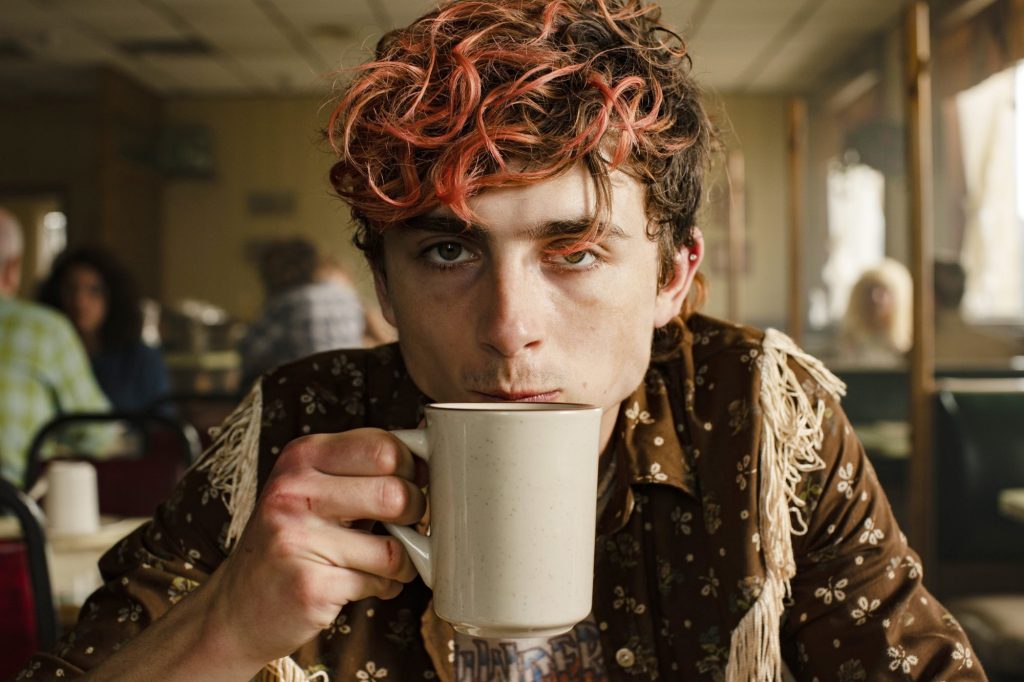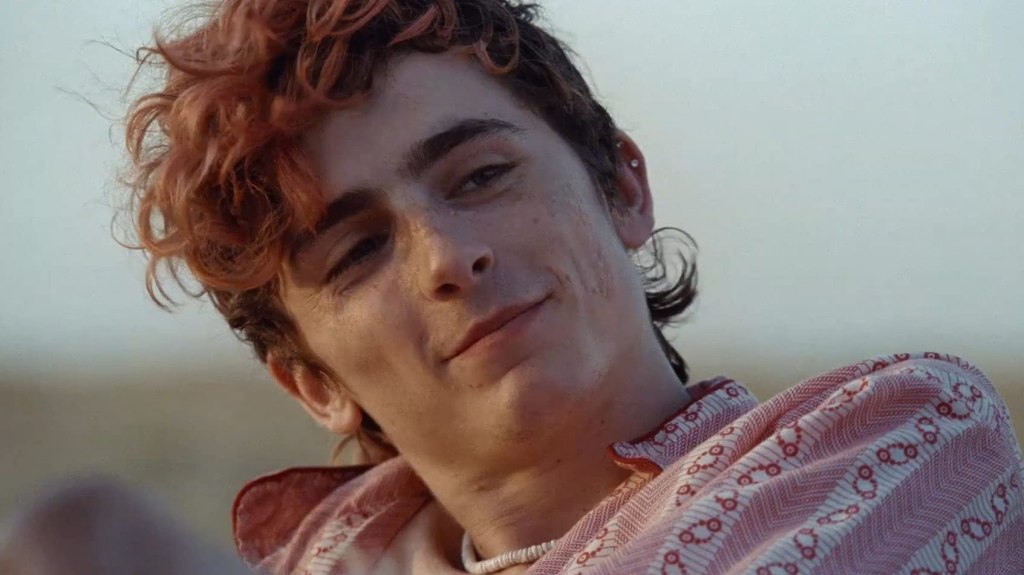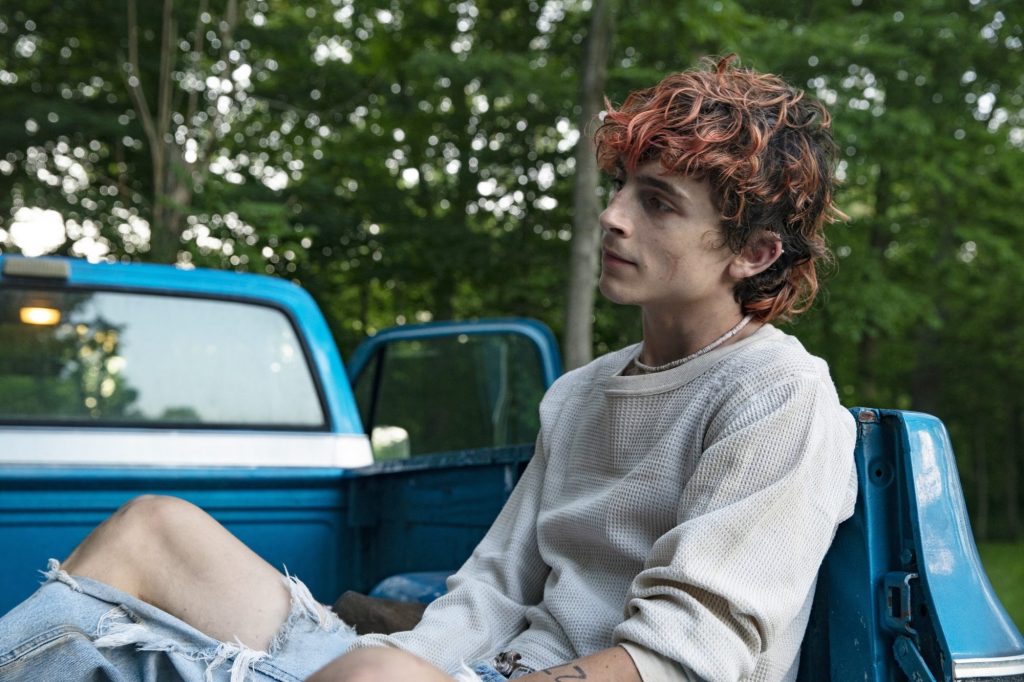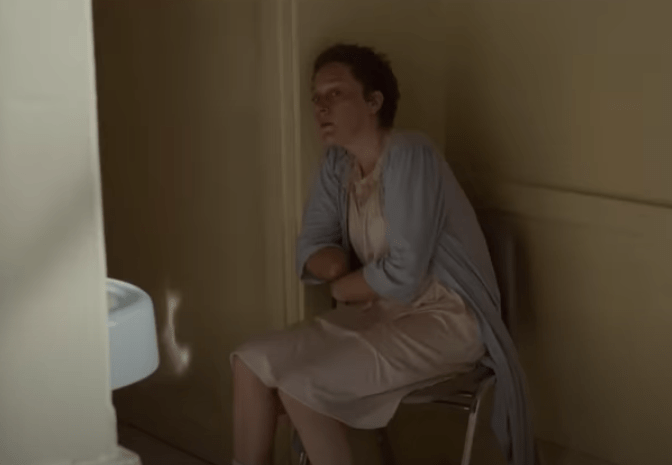
- POPSUGAR Australia
- Beauty
- The Significance Behind Timothée Chalamet’s Red Hair in “Bones and All”
The Significance Behind Timothée Chalamet’s Red Hair in “Bones and All”

A cannibalistic romance film starring Timothée Chalamet probably wasn’t on your 2022 bingo card, but alas, this is reality. “Bones and All,” the newly released horror-drama based on Camille DeAngelis’ 2015 novel of the same name, is perhaps one of the most eyebrow-raising movies of the year. It is set in the 1980s and follows Lee (Chalamet) and Maren (Taylor Russell), two “eaters” (aka cannibals) living on the fringes of society who embark on a road trip across America in pursuit of freedom – and, of course, fall in love along the way.
Aside from, um, eating humans, one noteworthy aspect of Chalamet’s character is his vibrant red hair color cut into an ’80s-style mullet, a far departure from the star’s usual tousled brown curls. In an interview with POPSUGAR, lead hair designer Massimo Gattabrusi says that the transformation played a major role in bringing this unique character to life.
“From our first meeting with [director] Luca [Guadagnino], he said that he didn’t want the movie to have a fantasy or gore kind of look; he was looking for something real,” Gattabrusi says. “For Timothée, he was looking for something iconic and very different from his usual look.” So, what exactly went into creating this new epic cut – and why did the team choose the color red? Ahead, Gattabrusi is sharing more about Chalamet’s two-hour hair transformation, as well as other characters’ looks, in “Bones and All.”
The Unexpected Significance of Timothée Chalamet’s Red Hair Color
If you’re thinking that using red hair as a nod to the film’s cannibalistic gore is a little too on the nose, you’d be correct. “The choice of red was in empathy with the character, nothing about the blood,” Gattabrusi says with a laugh. “The red is more [about the] energy [of the character].” When it came to choosing a color, the team was inspired by the hair trends from the 1980s. “We were thinking about the color of the period and strong, crazy colors like Cindy Lauper, the more iconic rock stars,” he says.
The choice of red was in empathy with the character, nothing about the blood.
Unlike the majority of film projects he’s worked on, Gattabrusi wasn’t concerned with continuity on the set of “Bones and All.” Rather, he and Chalamet decided to use Lee’s hair as an emotional storytelling tool. By applying a semi-permanent dye, Gattabrusi could alter Chalamet’s color throughout the filming process to reflect the intensity in a given scene; playing up the boldness in some moments and keeping it softer in others. “I said to [Timothee], ‘Listen, I think we can use this – I think it can be an instrument that you use for this character.'” he says.
However, these changes are so subtle that they likely wouldn’t stand out to an unknowing audience – and that’s precisely the intention, says Gattabrusi. “When I saw the movie, you don’t [notice] this change in color, and that’s what I wanted,” he says. “It’s just something that you feel in the background. You don’t see it but you feel it.
Behind Timothée Chalamet’s Two-Hour Hair Transformation
To create the vivid red color, Gattabrusi says he first bleached Chalamet’s hair but kept his roots black “to feel the time pass through the hair.” After finding a shade of red that was typical from the ’80s, the stylist put it to the test – a screen test, that is – with Chalamet. “He was completely open to doing everything because he was very excited to discover the identity of the character,” Gattabrusi says. “We did a test one month before [shooting began] in New York, which was the first meeting with him. We did something soft, but it wasn’t enough so we prepared to do something stronger. The second time, we [created] a really strong copper red that was very impressive.”
The initial dyeing process took two hours with lots of trial and error. “I bleached his hair a couple of times to find the right [amount] of black on the roots or less and then I found the right amount of bleach,” Gattabrusi says. “Then I did three different intensities of red.”
However, once Chalamet’s hair was dyed, the prep time on set was only about 30 minutes. “I like to give the actor his time and all my [color] work with him was prepared before,” Gattabrusi says. “The color refresh would take me like five minutes.”
Crafting Timothée Chalamet’s ‘80s Mullet
To find the perfect haircut for Chalamet, Gattabrusi looked at portraits of drug addicts and other disenfranchised individuals. He eventually stumbled upon a photo by New York City documentary-style photographer Michael Joseph, which featured a man with the retro hairstyle. “I found this guy that had a mullet that was actually perfect for the period,” he says. “This became the point of the inspiration of this character.”
When it came time for the big chop, Gattabrusi says he paid special attention to Chalamet’s bone structure and head shape so as to create the most flattering cut. “When I did the haircut on him I was looking for the right geometric line for his head and his face,” he says. “A geometric haircut makes for a really strong image.”
Taylor Russell’s Micro Bangs Were Inspired By An Iconic Horror Flick
Micro bangs are the standout element of Maren’s look, which Gattabrusi says was directly inspired by actor Lauren Roselli as Stacey Hubka in the 1991 psychological horror film “Silence of the Lambs.” “Luca [Guadagnino] was really in love with the little bangs,” he says. Like Chalamet, Russell was more than willing to undergo a transformation for her character and even let Gattabrusi cut her hair the first day they met to discuss her look.
At the beginning of the film, Russell’s hair is pulled back into a braid or bun, with her natural texture coming through later. “She starts this journey of freedom and step by step, the hair becomes freer and more natural; more frizzy, more curly,” Gattabrusi says, adding that the rain, dust, and other environmental elements of the Midwestern shooting locations sometimes helped enhance this effect.
“Sometimes I let the weather work with me and sometimes I contrast the weather,” he says. “We shot a lot at night and the nights were very damp. I stayed very close to her without interrupting her concentration and found the right moments to [adjust her hair] scene to scene.”
How Chloë Sevigny’s Buzzed Hair Helped Bring Her Character To Life
Sevigny’s character of Janelle Yearly (Maren’s mother) isn’t given a ton of screen time, but she still makes quite an impact. An “eater” herself who has been institutionalized, Janelle helps Maren understand her own tendencies and piece together her past. Gattabrusi says making Sevigny look downtrodden was a challenge in itself, given her natural beauty. To give her a jarring transformation, he created a wig that made it look like her hair had been buzzed off.
“I had this short wig and I sewed it into her hair,” Gattabrusi says. “The first time that I put her in it she was a little bit shocked. [The hair] is a very strong instrument to change the identity or personality. She took her time to feel the character. And Luca was excited about the result. Chloe was excited because she felt it was a big help [for developing her character]. It was only a couple of scenes, but it was very important that she was looking like the right character with the right hair.”






